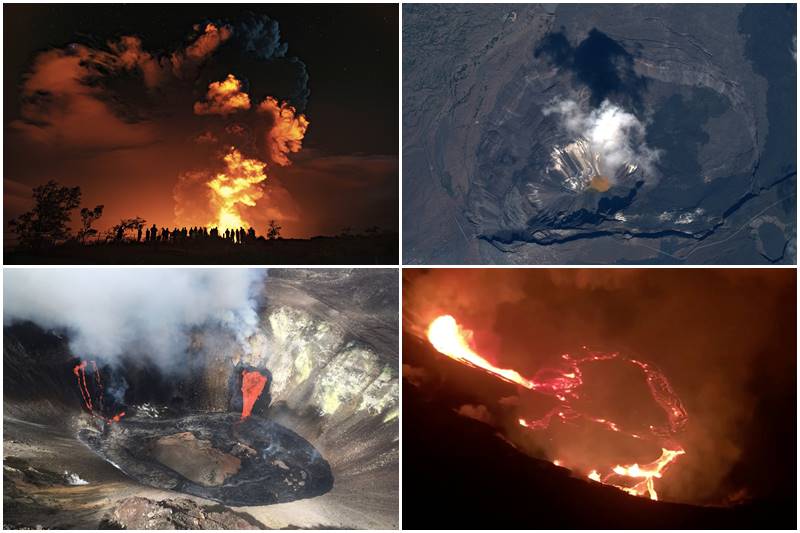
Kilauea volcano on Hawaii's Big Island erupts as lava went shooting into the air, boiling away a water lake and sending a massive plume of steam, gas and ash soaring into the atmosphere. In the first hours of the eruption, lava mixed rapidly with water in the summit's crater lake to create steam. The sky above the eruption turned shades of orange and red as people lined up to watch the billowing column of gas and vapor rise above the volcano in the middle of the night. Let us take a look at stunning photos: -
A magnitude 4.4 earthquake hit about an hour after the volcano began erupting. (AP Photo)
-
Tom Birchard, a senior forecaster with the National Weather Service in Hawaii, said lava poured into the crater and mixed with the water to cause a vigorous eruption for about an hour. (Reuters Photo)
-
The eruption began late Sunday within the volcano's caldera, the US Geological Survey said. Because of the location of the erupting lava, no homes were evacuated and there was little risk to the public. (AP Photo)
-
The crater, named Halemaumau, is located within Hawaii Volcanoes National Park and was home to a longstanding lava lake that was present for years before a 2018 eruption caused it to drain. (AP Photo)
-
An advisory was issued by the National Weather Service in Honolulu, warning of fallen ash from the volcano. (Reuters Photo)
A NASA's Terra/Modis satellite image shows an overview of Hawaii and the erupting Kilauea volcano. (Reuters Photo) -
Kilauea last erupted in 2018, destroying more than 700 homes and spewing enough lava to fill 320,000 Olympic-sized swimming pools. (Reuters Photo)
-
An area more than half the size of Manhattan was buried in up to 80 feet (24 meters) of now-hardened lava. The lava flowed over the course of four months. (Reuters Photo)
-
The volcano had not erupted since 2018 but before then had active lava flows for more than three decades. Kilauea is one of the most active volcanoes on earth. (Reuters Photo)